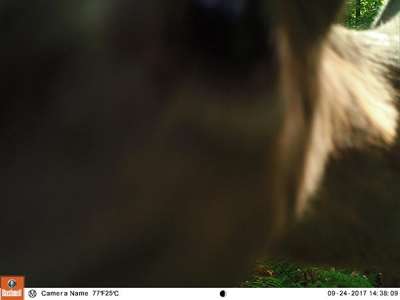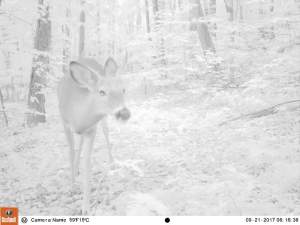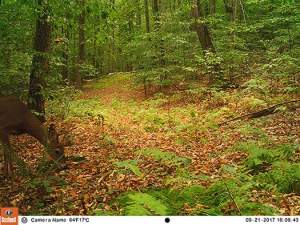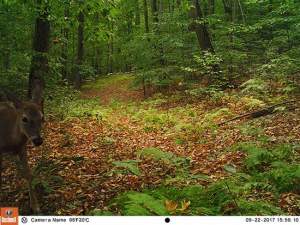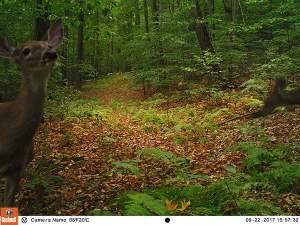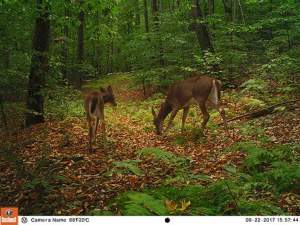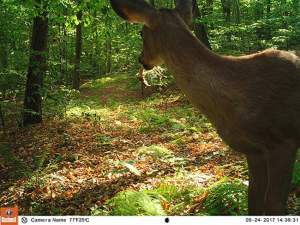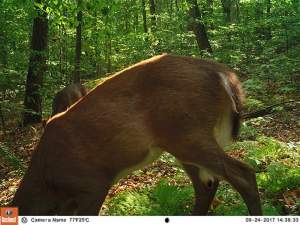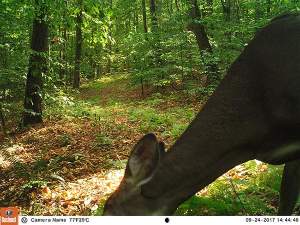Like a lot of hunters, I keep tabs on the deer around our camp with trail cameras that are left up year-round. This particular four-day window presents a couple of nice, teachable moments where it comes to whitetail behavior and physiology.
The first two shots, taken on 9/21, show two 1 1/2-year-old bucks I’d never seen before on camera. The conventional wisdom amongst mammologists is that fawns stay with mom through the first year and she kicks them out in spring when her new fawn or fawns are born. The female 1-year-olds may stay put and reconnect with mom, forming a kind of multigenerational, matrilineal group. But the males usually head out for greener pastures. More recent research suggests, though, that in many cases the young males stick around their natal ranges their second summer and begin dispersing in September or October. In this study done at Penn State in 2002, half the young males dispersed in May and June and the other half left in September and October. I’m guessing the young bucks in these photographs belong to the late-dispersing cohort.
In the next series of photos we see a 5 1/2-month-old buck fawn – isn’t he cute? In the pictures taken on September 22 he takes in the camera briefly before scampering over toward mom. Two days later he returns and really examines the camera, in one shot eating in front of it. (I can’t tell exactly what kind of plant that is in his mouth, can you?) What I found interesting about the series of pictures on September 24 is that you get a good look at the fawn’s flank, and he’s still largely covered in his red summer coat. The mother, though, in the last shot, has molted and is growing her winter coat of gray, hollow, insulated hairs. Where it comes to this molt, the conventional wisdom is that it’s triggered by the animal’s pineal gland in response to seasonal sunlight variations, which I certainly don’t dispute. But I think temperature must also play a role, in the same way that trees take their cues for bud break and leaf drop from both their internal clocks and external temperatures. I’d guess the fawn’s molt was delayed somewhat by the freakishly warm September temperatures we had.


